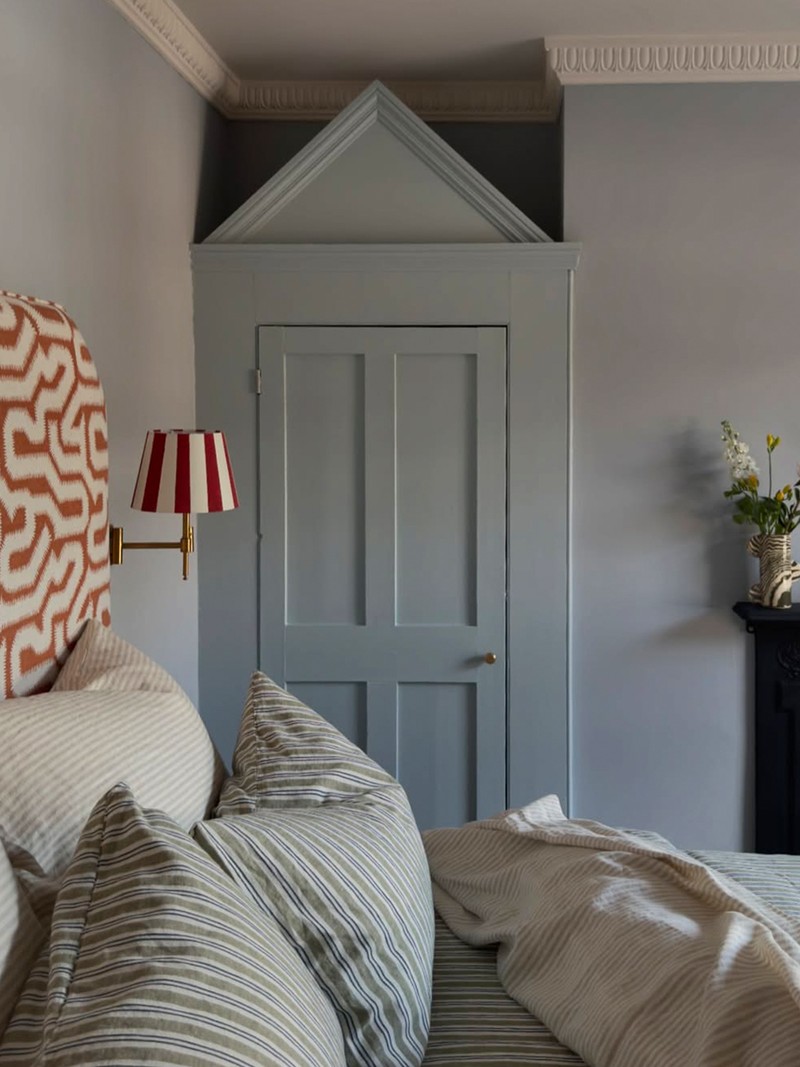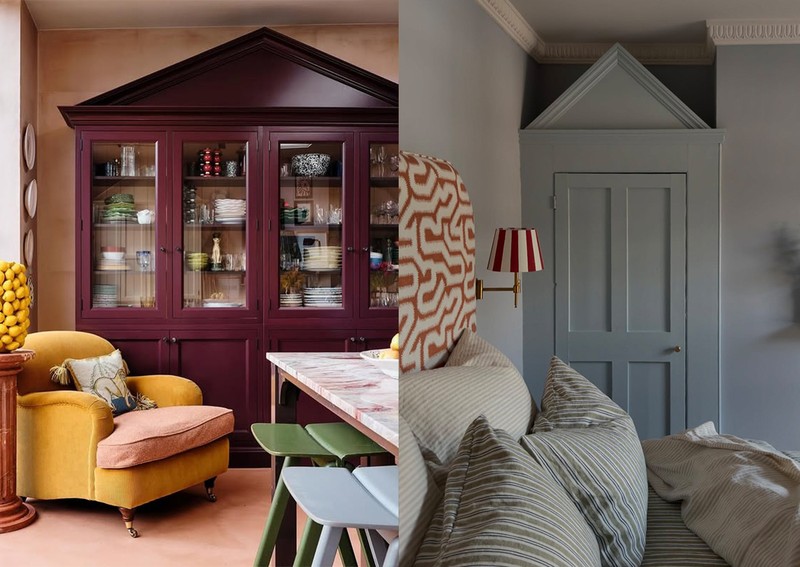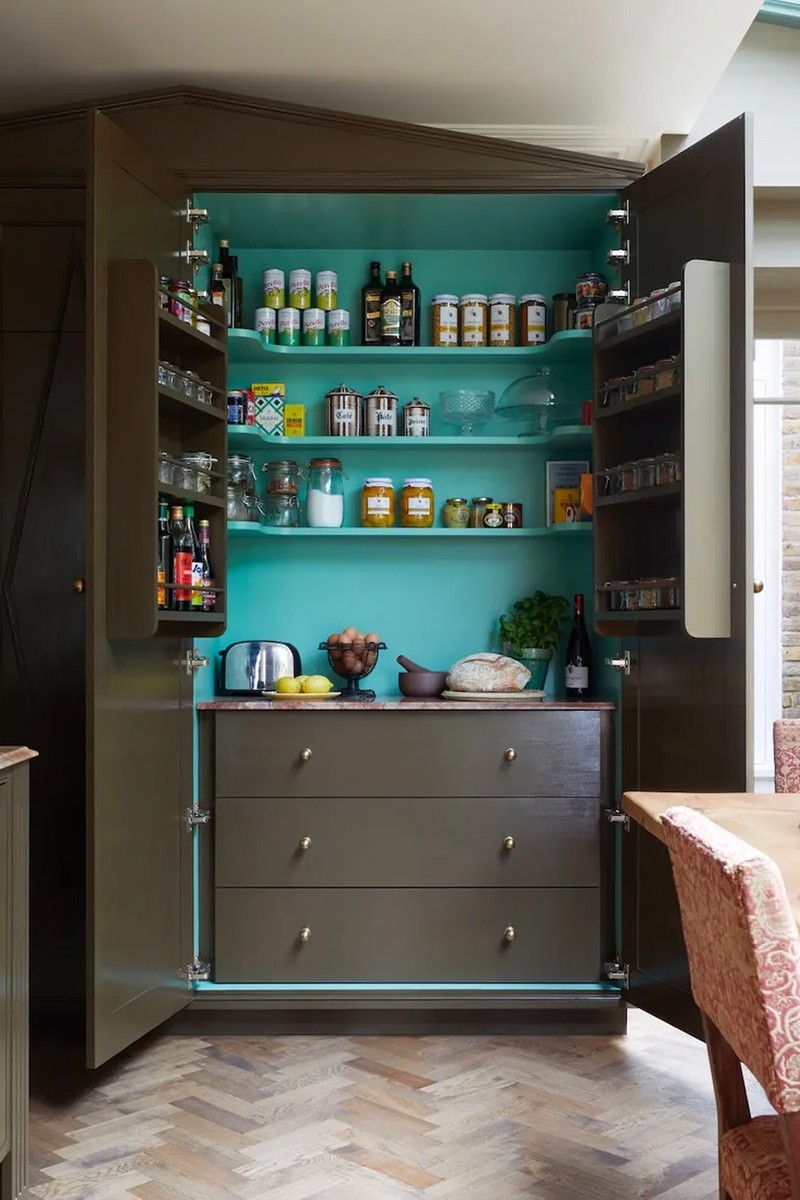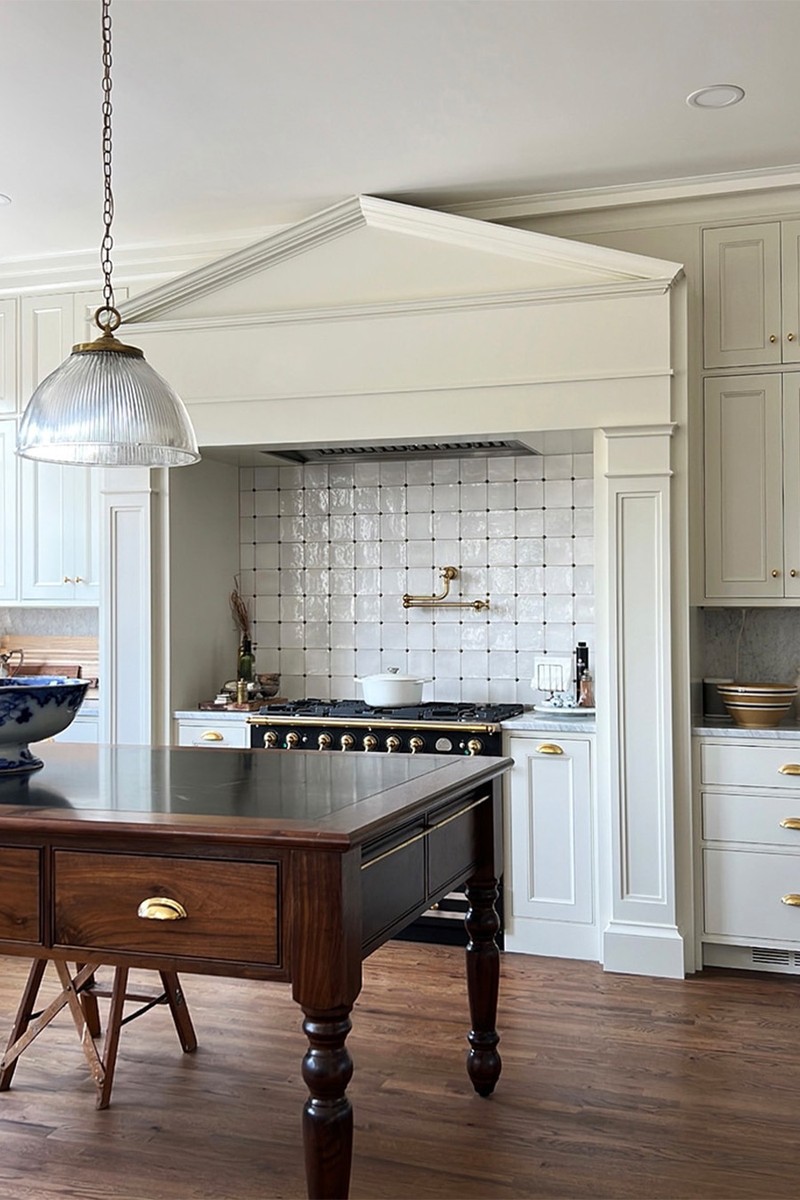
Trend Watch: Pediments
Tom Cox from Studio HÁM loves pediments for their elegant, architectural quality…
“Pediments are ideal above doors, wardrobes and cupboards, especially in kitchens, where they’re used as an elegant architectural detail. For taller furniture pieces like dressers and bookcases, they help create a sense of grandeur, making the design feel more substantial and thoughtfully considered. A pediment can also be playful; at HÁM, we tend to look beyond formal rules, embracing the idea that if it looks right, it probably is right.
“A pediment adds interest and drama, guiding the eye upward. It frames a cupboard well, turning it into a striking feature within the room. The pediment should reflect the room’s design language, drawing from its architecture. In a classic interior, both intricate and restrained pediments can be effective – the key is balance. It should complement the cupboard and surroundings without overwhelming the space. If the cupboard is a focal point, the pediment should work in harmony with it. Thoughtfully executed, it becomes a seamless architectural feature, enhancing rather than competing with the room.
“Timeless materials like solid hardwood, particularly oak, offer both durability and elegance, with a distinctive grain adding character when opting for a natural finish. For a painted finish, we recommend a mix of solid hardwoods and engineered boards. Detailing in resin or plaster allows for custom moulding and decorative carving, all contributing to that elevated country-house look.
“It's important to ensure the pediment's width is proportional to the cupboard's size, typically extending slightly beyond its edges. However, if the cabinet has a cornice, it's best for the pediment to sit slightly short of the sides. The height should also be balanced – too large a pediment can overwhelm the space, while a more delicate one may get lost in a larger room.
“Generally, we aim to match the pediment with the cupboard below to ensure the ensemble works cohesively. However, opting for a contrasting colour or finish – such as a darker or lighter tone – can highlight the pediment as a focal point and add another dimension to the room's palette
“When incorporated thoughtfully, a pediment can create a sense of height and presence, making the space feel more expansive. For smaller rooms, a more delicate, shallow pediment is best, avoiding harsh, overly ornate details and angles that may clutter the space. A lighter finish and simple detailing can also keep the room feeling open.
“Intricate mouldings or carvings bring historical or classical references to the design, grounding the piece in tradition and craftsmanship. These details add texture and depth, enhancing the pediment's visual impact and making the cupboard feel like a statement piece. Finials are often used to help balance the design, drawing the eye without adding visual weight.”
Visit STUDIOHAM.CO.UK

Designer Laura Stephens loves pediments for their playful, quirky attributes…
“When it comes to materials, it’s a good idea to ensure the pediment is made in the same material as the piece it’s sitting on. That could be hardwood, but painted MDF also works as long as the paint finish is durable.
“To make it look authentic and integral to the piece it’s sitting on, I would always make it the same finish or paint colour. I love to add decorative mouldings which I would replicate on the piece it sits on to add integrity and make it feel cohesive.
“Determine the appropriate size and scale of the pediment really depends on the room and whether you want to make it a ‘feature’. It also depends on what height you have in the room. I like to use a pediment to fill a gap between the piece and the ceiling, but this is very much done on sight rather than applying a hard and fast rule.
“A pediment can be incorporated into smaller or low-ceiling spaces without making the area feel cramped. As long as the slope is appropriate in the ceiling space, it can be a lovely feature to draw the eye upwards and give the illusion of a taller ceiling.
“A pediment should reflect its classical roots, and I would use it to bring a traditional yet quirky element to a room design. A pediment can really elevate a joinery piece. It can add a playful element to what could be quite a pedestrian piece, and it can also break up the rectangular angles of the room.
“Pediments can be used over doors to highlight an architrave or door and add a classical detail to a room. I’m currently exploring having lighting above a bookshelf with a pediment on – a warm glow above it will draw the eye and add some drama without looking over the top.”
Visit LAURASTEPHENS.CO.UK
Dan Matthews from A.Modest.Semi embraces their maximalist character…
“I love how a pediment (or hat, as I call them) draws your eye to a different part of the room; it adds interest, dimension and texture. I think the aesthetic of a hat is more maximalist, as it draws on tradition, with a view to more is more.
“My favourite way to incorporate a hat is to colour drench one in the same as the cabinet – this could be tonal to the room, the same colour as the room or a totally contrasting colour. You want to make it all look like one piece of furniture. A good example is Sarah Corbett-Winder; she has little hats dotted around her home, especially on top of door frames. Follow her for inspiration.
“I love the pediment in our bedroom. There was a void of space above our cupboard which easily could have had two storage baskets up there, but we decided to pop a hat on it to make it a feature. It’s the same colour as the walls and woodwork but adds subtle interest and dimension. I also love the shadows it casts when sunlight floods through the room. I have one planned for the larder in our kitchen renovation too.”
Visit AMODESTSEMI.COM
DISCLAIMER: We endeavour to always credit the correct original source of every image we use. If you think a credit may be incorrect, please contact us at info@sheerluxe.com.



